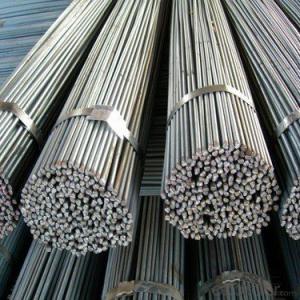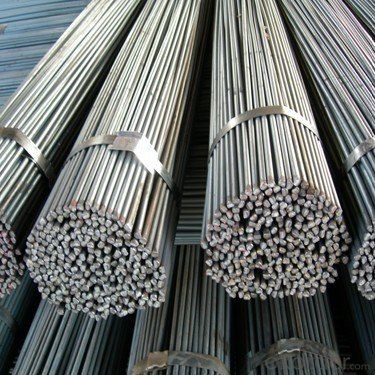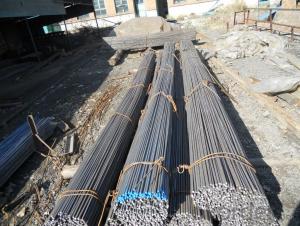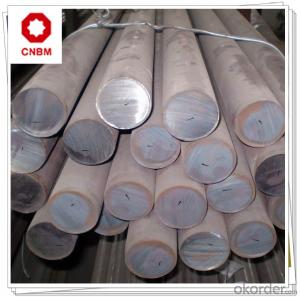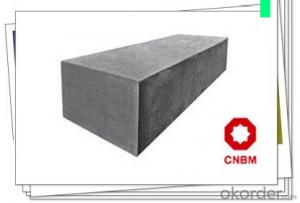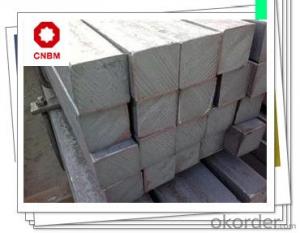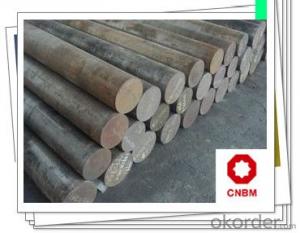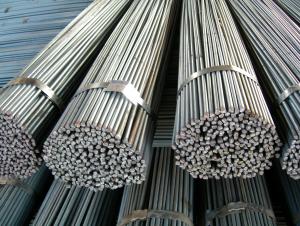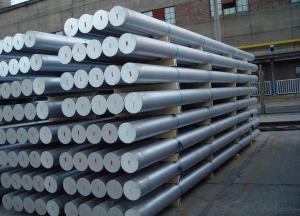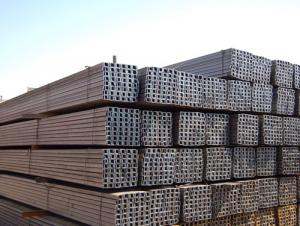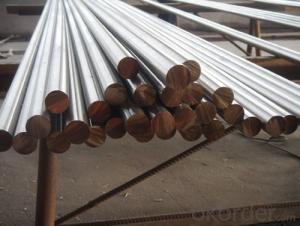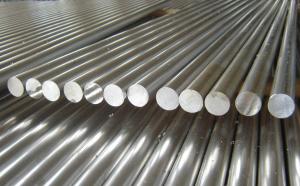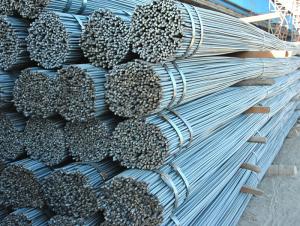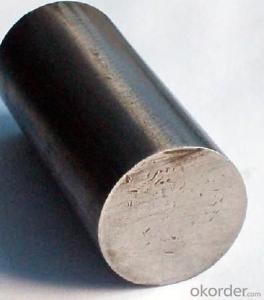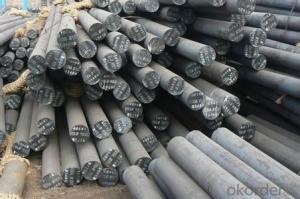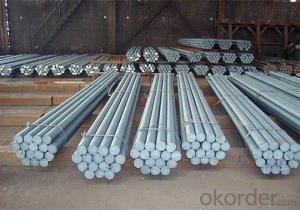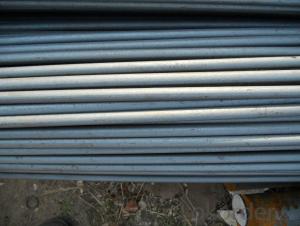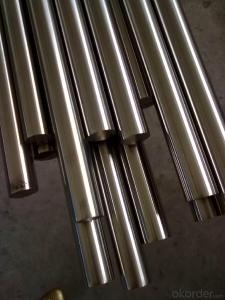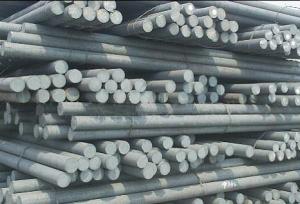Round bar Q235 ou Q195 5MM-100MM hot rolled
- Loading Port:
- Shanghai
- Payment Terms:
- TT OR LC
- Min Order Qty:
- 25 m.t.
- Supply Capability:
- 20000 m.t./month
OKorder Service Pledge
OKorder Financial Service
You Might Also Like
ROUND BAR Details:
| Minimum Order Quantity: | Unit: | m.t. | Loading Port: | ||
| Supply Ability: | Payment Terms: | Package: | wire bundle |
Product Description:
Specifications of Wire Rod Q235:
Steel Grade: Q235, Standard: GB Diameter: 5.5mm, 6.5mm, 7mm,8mm,9mm,10mm,12mm,14mm
Diameter Tolerance:±0.3mm 6.5mm can be drawing into 2mm/8.0mm can be drawing into 3mm
Brand Name: N-RIVER Place of Origin: Hebei, China Mainland Application: construction, building etc
Chemical Composition:
Please kindly find our chemistry of our material based on Q235 as below for your information
Trademark | Rank | Chemical composition (quality score) % | |||||
C | Si | Mn | S | P | |||
| ≤ |
| ≤ | ≤ | |||
Q235 | A | 0.14-0.22 | 0.30 | 0.30-0.65 | 0.050 | 0.045 | |
Q235 | B | 0.12-0.20 | 0.30 | 0.30-0.70 | 0.045 | 0.045 | |
Trademark | Rank | Pulling Test | |||||
Bend PointΔs/Mpa | Tensile Strength | Elongation Ratioδ5% | |||||
Thickness (Diameter) /MM | Thickness (Diameter) /MM | ||||||
≤16 | 16-40 | ≤16 | 16-40 | ||||
≥ | ≥ | ||||||
Q235 | A | 235 | 225 | 375-500 | 26 | 25 | |
Q235 | B | 235 | 225 | 375-500 | 26 | 25 | |
Usage and Applications of Wire Rod Q235:
After hot-rolled the products shaped into coil and delivery as finished product, including round, square, rectangular, hexagonal and so on. Since most of the products are round, it is generally called wire rod. Carbon steel wire rod is widely used in construction and manufacturing. Carbon steel wire rod is mainly used for reinforcement of reinforced concrete and welded structure or reprocessed (roberts , nail, etc.) materials, especially used to produce wire drawing, welding electrode, nails, spring, electronic, precise machinery parts and so on.
Packaging & Delivery of Wire Rod Q235:
Packaging Detail: products are packed in coil and then shipped by container or bulk vessel
Each coil weight: 2-3MT
Delivery Detail: within 45 days after received deposit or LC.
Label: to be specified by customer, generally, each bundle has 1-2 labels
Trade terms: FOB, CFR, CIF
- Q: What are the different types of steel round bar alloys used in the automotive industry?
- In the automotive industry, there are several types of steel round bar alloys used due to their various properties and applications. 1. Carbon Steel: Carbon steel round bars are widely used as they offer good strength and toughness. They are used in various automotive components such as axles, crankshafts, and gears. 2. Alloy Steel: Alloy steel round bars contain additional alloying elements such as chromium, nickel, or molybdenum. These alloys enhance the mechanical properties of the steel, making it stronger and more durable. Alloy steel round bars are commonly used in automotive applications like suspension components, drive shafts, and steering components. 3. Stainless Steel: Stainless steel round bars are highly resistant to corrosion, making them suitable for automotive applications that require durability in harsh environments. They are commonly used in exhaust systems, fuel tanks, and body parts. 4. Tool Steel: Tool steel round bars have high hardness, wear resistance, and toughness. They are mainly used in the production of automotive tools and dies, such as punches, dies, and cutting tools. 5. Bearing Steel: Bearing steel round bars are specifically designed to provide excellent wear resistance and high load-carrying capacity in automotive bearings. These bars have a high level of hardness and are heat-treated to ensure optimal performance. 6. Spring Steel: Spring steel round bars are used in automotive suspension systems and other applications that require excellent elasticity and fatigue resistance. These bars can withstand repeated stress and maintain their shape, making them ideal for automotive springs and stabilizer bars. It's important to note that the specific choice of steel alloy depends on the desired properties, performance requirements, and cost considerations for each automotive component.
- Q: Can steel round bars be used in the agricultural machinery industry?
- Indeed, the agricultural machinery industry can employ steel round bars. Renowned for their robustness, endurance, and adaptability, steel round bars prove suitable for diverse applications, including agricultural machinery. These bars facilitate the fabrication of essential components such as shafts, axles, gears, and connecting rods, crucial for agricultural machinery. The steel's exceptional strength ensures the durability of these components, enabling them to endure the arduous conditions and heavy loads frequently encountered in agricultural operations. Furthermore, steel round bars lend themselves effortlessly to machining and welding, enabling customization and efficient production of agricultural machinery parts. Consequently, steel round bars emerge as a dependable and cost-effective choice for the agricultural machinery industry.
- Q: How are steel round bars stored?
- To ensure the safety and easy accessibility of steel round bars, they are typically stored in a manner that prioritizes these factors. One common storage method involves horizontally stacking the bars on a pallet or rack system, often bundling them together and securing them with straps or wire to prevent rolling or shifting. Another option is to store the bars vertically in racks, placing each bar in a designated slot to avoid contact or damage. In both cases, maintaining proper spacing between the bars is crucial to allow for sufficient air circulation and prevent potential corrosion. Additionally, it is essential to store steel round bars in a dry and covered area to shield them from moisture, dust, and other environmental elements. Proper labeling and inventory management systems are also of utmost importance to ensure easy identification and retrieval of the bars when necessary.
- Q: What are the differences between the products made of wrought round steel and hot rolled round steel and tested by mechanical testing after heat treatment?
- In comparison, the general longitudinal performance of hot rolled round bar is better than that of transverse or tangential direction, and the difference between the two values is obvious. The banded structure is more obvious in the longitudinal microstructure, and the deformation of non-metallic plastic inclusions is more obvious
- Q: How do steel round bars compare to wrought iron bars?
- Steel round bars and wrought iron bars have several differences that set them apart. Firstly, steel round bars are made from an alloy of iron and carbon, whereas wrought iron bars are composed of pure iron with a low carbon content. This difference in composition leads to varying properties. Steel round bars are known for their strength and durability, making them suitable for a wide range of applications, including construction, manufacturing, and engineering. On the other hand, wrought iron bars are softer and more malleable, allowing them to be easily shaped and formed into intricate designs. This characteristic makes wrought iron bars popular in decorative applications such as gates, fences, and ornamental pieces. Another difference lies in their manufacturing processes. Steel round bars are typically produced through hot rolling, which involves heating the steel billet and passing it through a series of rollers to shape it into the desired round bar form. In contrast, wrought iron bars are made through a labor-intensive process called blacksmithing. This involves heating the iron and repeatedly hammering it to remove impurities and create a fibrous structure, resulting in its characteristic grainy appearance. In terms of cost, steel round bars are generally more affordable compared to wrought iron bars. The manufacturing process for steel is more streamlined and efficient, leading to lower production costs. Wrought iron bars, on the other hand, require more time and labor, making them more expensive. Finally, when it comes to corrosion resistance, steel round bars have an advantage. Steel can be further alloyed with elements such as chromium, nickel, and molybdenum to enhance its resistance to rust and corrosion. This makes steel round bars suitable for outdoor applications where they may be exposed to moisture and harsh environmental conditions. Wrought iron bars, although they possess some level of corrosion resistance, are more prone to rusting and require regular maintenance to prevent deterioration. In conclusion, steel round bars and wrought iron bars differ in terms of composition, strength, manufacturing process, cost, and corrosion resistance. The choice between the two will depend on the specific requirements of the application, with steel round bars being favored for their strength and affordability, while wrought iron bars are often chosen for their malleability and decorative appeal.
- Q: How do you check the quality of a steel round bar?
- To check the quality of a steel round bar, several methods can be employed. Firstly, visual inspection is crucial, where one should look for any surface defects, such as cracks, pits, or unevenness. Next, measurements of diameter, length, and straightness should be taken using appropriate tools. Additionally, conducting a hardness test using a hardness tester can determine the bar's hardness, ensuring it meets the required specifications. Other quality checks may involve verifying the chemical composition and performing non-destructive tests like ultrasonic or magnetic particle inspections to identify any internal flaws. Ultimately, a comprehensive assessment combining these various methods will help ascertain the overall quality of the steel round bar.
- Q: What is the difference between a peeled and a centerless ground steel round bar?
- A peeled steel round bar involves the removal of the outer surface to achieve a smooth and precise finish. This is typically done using a peeling machine. The purpose of this process is to eliminate any imperfections or scale on the bar's surface, resulting in a polished appearance. Additionally, the peeled round bar goes through a sizing process to ensure accurate dimensions. This makes it suitable for various applications where a smooth surface and precise dimensions are important. In contrast, a centerless ground steel round bar is achieved through the use of a centerless grinding machine. This process entails feeding the bar through grinding wheels that rotate at different speeds. Material is removed from the outer diameter of the bar to attain the desired size and surface finish. Centerless grinding offers tight tolerances and precise sizing, making it suitable for applications that demand high precision and accuracy. In summary, the primary distinction between a peeled and a centerless ground steel round bar lies in the method employed to achieve the desired surface finish and dimensional accuracy. While both processes result in a smooth and precise bar, peeling eliminates material from the outer surface, whereas centerless grinding removes material from the outer diameter. The choice between the two depends on the specific requirements of the application, as well as the desired surface finish and dimensional accuracy.
- Q: Requirements for groove welding of grade 22mm round steel and manual arc welding
- Chamfer or breach can also be used in grinding machine, notice groove surface cleaning with carbon or gas cutting, consider the parent material selection process, such as carbon will carburizing etc.
- Q: Is there a standard for the grounding of pumping units and the length of the length of the angle steel or round steel?
- Yes, the length of the grounding body must not be less than 2.5 meters.
- Q: What are the different grades of alloy steel round bars for automotive applications?
- There are several different grades of alloy steel round bars used for automotive applications, including 4140, 4340, and 8620. These grades offer varying levels of strength, toughness, and wear resistance, allowing them to be used in different automotive components such as shafts, gears, and axles. The choice of grade depends on the specific requirements of the application, taking into consideration factors like load capacity, durability, and cost.
Send your message to us
Round bar Q235 ou Q195 5MM-100MM hot rolled
- Loading Port:
- Shanghai
- Payment Terms:
- TT OR LC
- Min Order Qty:
- 25 m.t.
- Supply Capability:
- 20000 m.t./month
OKorder Service Pledge
OKorder Financial Service
Similar products
Hot products
Hot Searches
